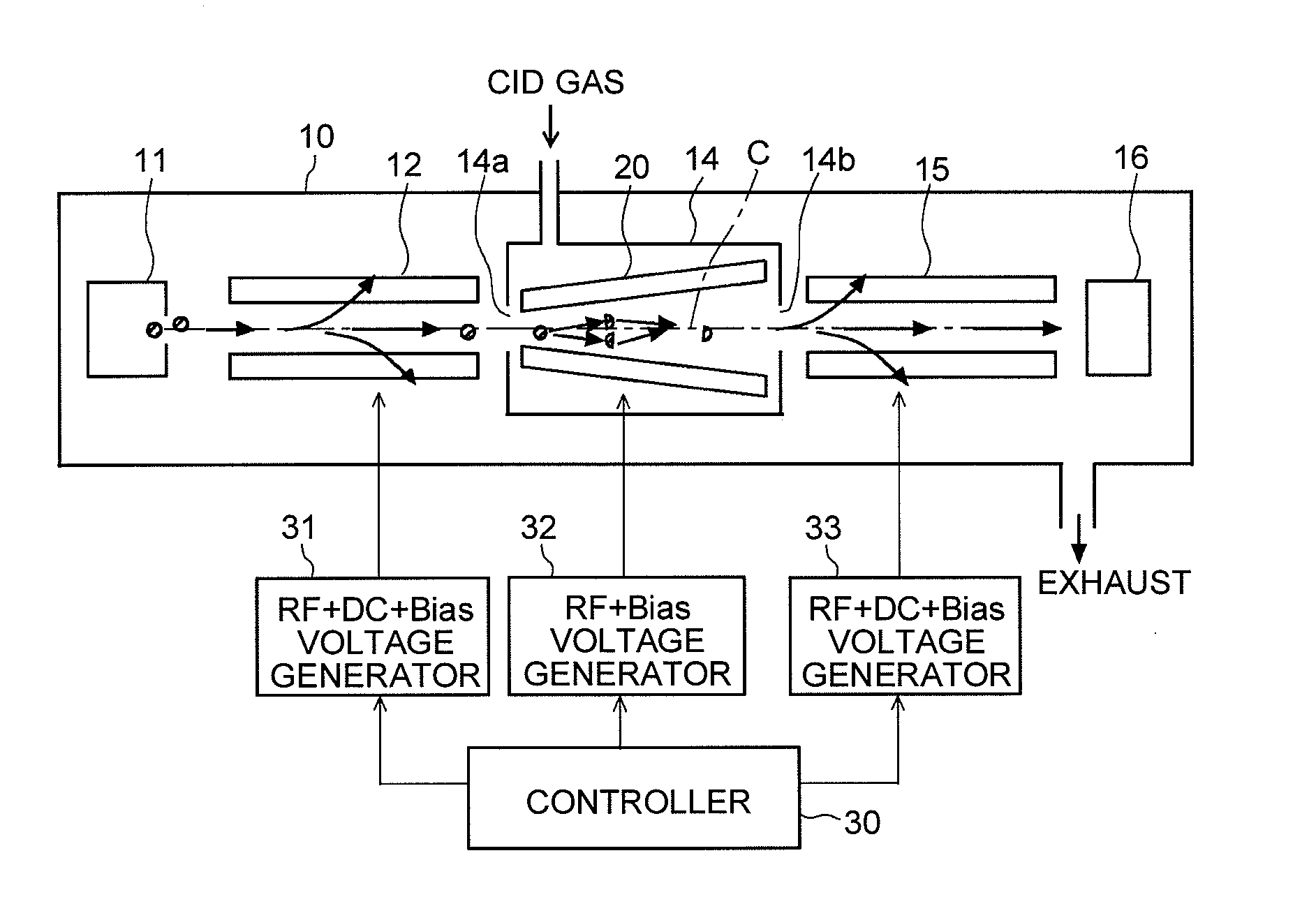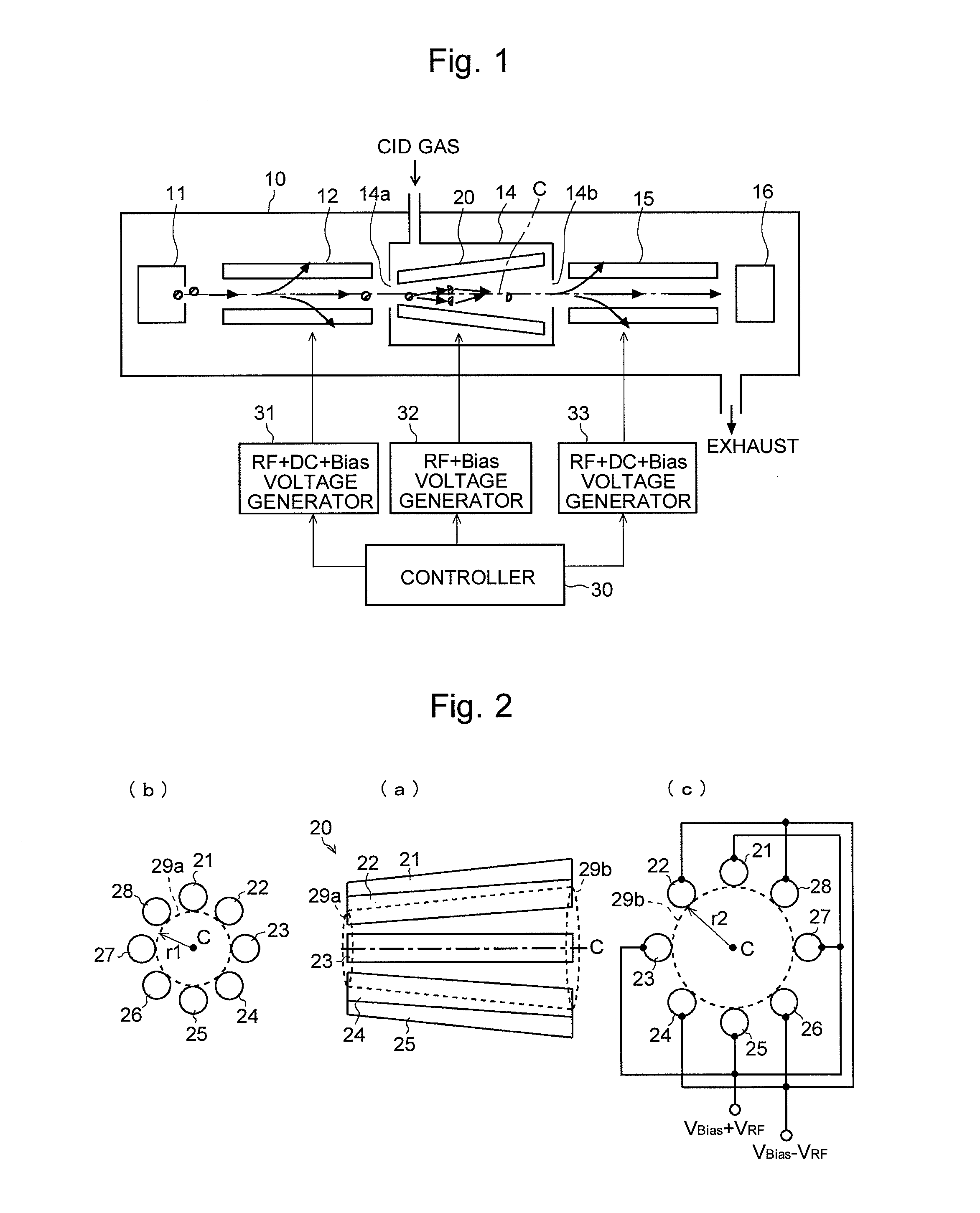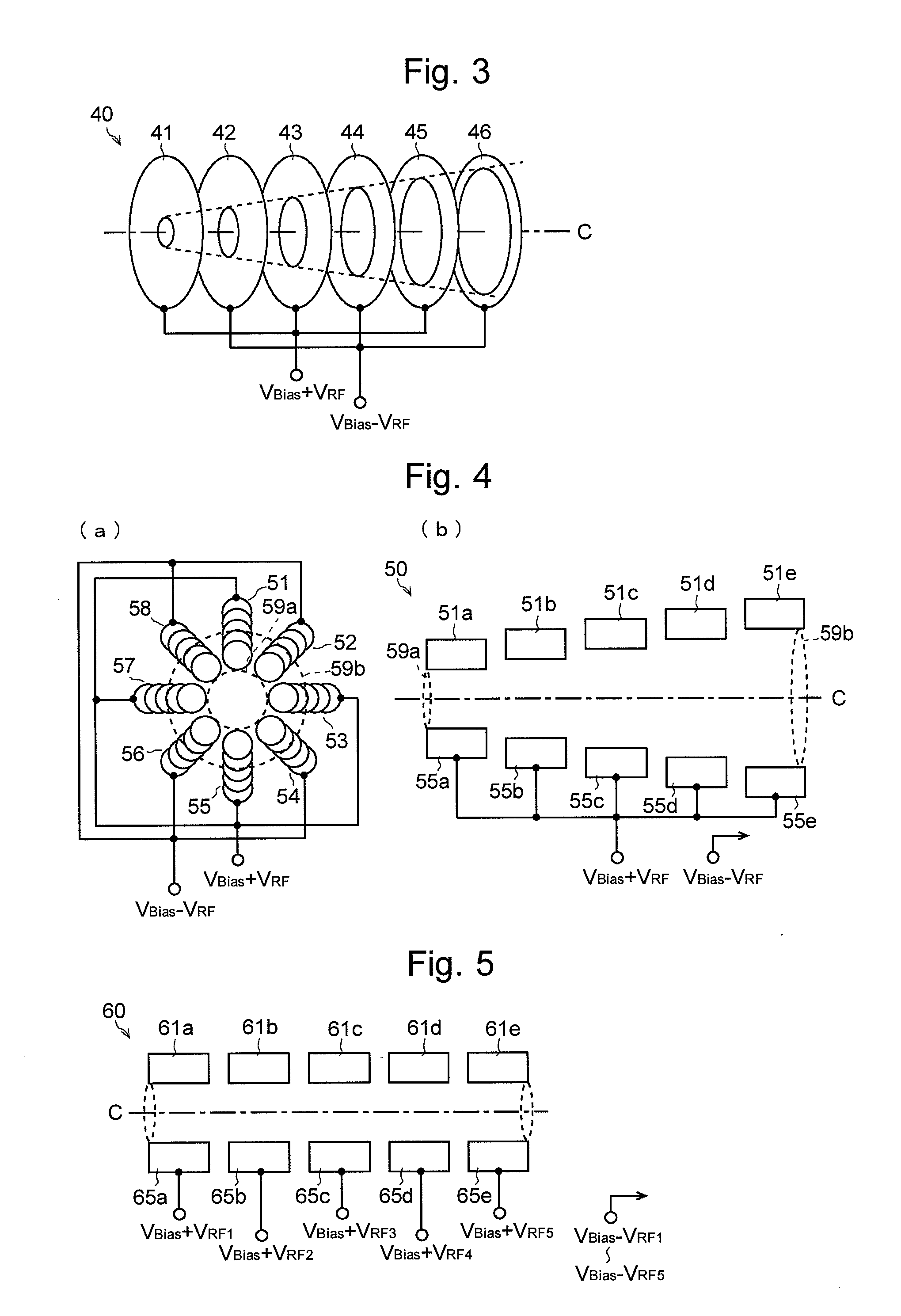Mass spectrometer
- Summary
- Abstract
- Description
- Claims
- Application Information
AI Technical Summary
Benefits of technology
Problems solved by technology
Method used
Image
Examples
first embodiment
[0047]An MS / MS mass spectrometer which is an embodiment (the first embodiment) of the present invention will be described with reference to the figures. FIG. 1 is an overall configuration diagram of the MS / MS mass spectrometer according to this embodiment, and FIG. 2 is an external plain view of an ion guide provided in the collision cell in the MS / MS mass spectrometer of the present embodiment. The same components as in the conventional configuration as illustrated in FIG. 11 are indicated with the same numerals and the detailed explanations are omitted.
[0048]In the MS / MS mass spectrometer of the present embodiment, as in the conventional configuration, a collision cell 14 is provided between the first-stage quadrupole electrodes 12 and the third-stage quadrupole electrodes 15 in order to generate a variety of product ions by dissociating a precursor ion. This collision cell 14 is an almost hermetically-closed structure except for an ion injection aperture 14a and ion exit aperture...
second embodiment
[0059]The radio-frequency ion guide 40 illustrated in FIG. 3 is composed of a plurality (six in this example) of plate electrodes 41 through 46 arranged along the ion optical axis C. Each of the plate electrodes 41 through 46 has a circular opening centering on the ion optical axis C, and the radius of the opening increases in a stepwise manner toward the ion's traveling direction. This electrode design is similar to that of the first embodiment in which the radius of the inscribed circle of a plurality of rod electrodes gradually increases, and hence brings about the same effect as in the first embodiment. In this case, the radio-frequency voltage VRF is applied to the plate electrodes in such a manner that the polarity is reversed for two electrodes neighboring along the ion optical axis C.
third embodiment
[0060]The radio-frequency ion guide 50 illustrated in FIG. 4 can be considered to be composed of eight rod electrodes disposed in such a manner as to surround the ion optical axis C as in the first embodiment. However, the substance of each rod electrode is not a single electrode but a virtual rod electrode (e.g. numeral 51) composed of a plurality (five in this example) of segmented rod electrodes (e.g. numerals 51a through 51e) which are separated in the direction of the ion optical axis C. That is, eight virtual rod electrodes 51 through 58 are disposed in such a manner as to surround the ion optical axis C. In each of the virtual rod electrodes 51 through 58, the segmented rod electrodes (e.g. numerals 51a through 51e) are disposed in such a manner that their distance from the ion optical axis C increases in a stepwise manner toward the ion's traveling direction. Therefore, the magnitude or depth of the pseudopotential does not have a smoothly slanted gradient as in the first em...
PUM
 Login to View More
Login to View More Abstract
Description
Claims
Application Information
 Login to View More
Login to View More - R&D
- Intellectual Property
- Life Sciences
- Materials
- Tech Scout
- Unparalleled Data Quality
- Higher Quality Content
- 60% Fewer Hallucinations
Browse by: Latest US Patents, China's latest patents, Technical Efficacy Thesaurus, Application Domain, Technology Topic, Popular Technical Reports.
© 2025 PatSnap. All rights reserved.Legal|Privacy policy|Modern Slavery Act Transparency Statement|Sitemap|About US| Contact US: help@patsnap.com



